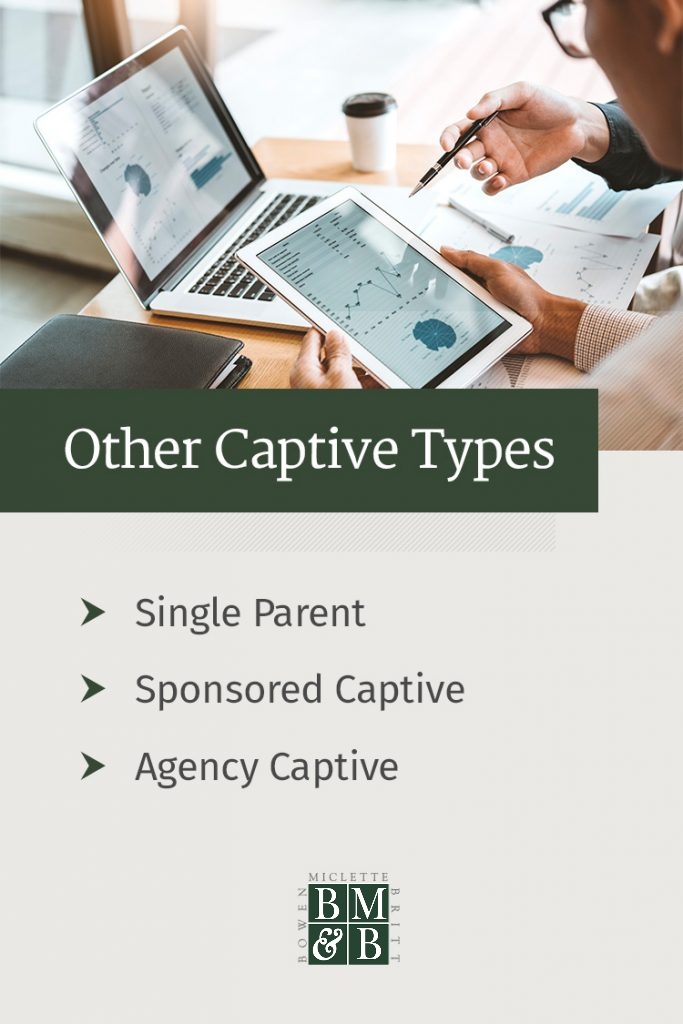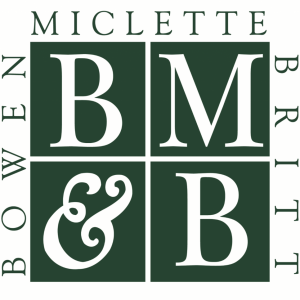

Unlocking the Benefits of Group Captive Insurance for Businesses
Captive insurance has existed for decades, but it was inaccessible to small and medium-sized businesses. With a contemporary approach to this insurance model, group captive insurance makes these advantages accessible to smaller companies. Whether you’re interested in construction group captives or group captives for health insurance, this strategy can offer the control needed to manage risk effectively.
The basic definition of a captive is an insurance company owned by the people or businesses it insures. A group captive uses this principle to insure multiple enterprises. While captives are essentially a form of self-insurance, they can provide more benefits than traditional approaches. When enterprises want greater control and lower costs, group captive insurance programs can be ideal for these goals.
What Is a Group Captive?
A group captive involves several companies owning an insurance company to benefit every member. These group captives typically comprise a shared industry, trade, or another overlapping trait among employers.
Heterogenous group captives include companies across various industries, while homogeneous types rely on members from a single industry. Homogenous group captives benefit from like-minded members who are familiar with the potential losses in the industry. In heterogeneous arrangements, member companies will likely be similar in size.
Member-owned group captives are ideal insurance vehicles for companies that may be too small to assume a large amount of risk independently. All companies assume the risk in a group captive arrangement and share the fixed costs. Captive insurance gives businesses more control over their insurance. Members influence the types of risk insured, the underwriting process, loss control, and risk management. Members’ captive premiums depend on their personal loss experiences, which they can influence.
Group captive insurance programs can include a range of coverages, from property and general liability to more complex types like medical malpractice. The group captive members can determine which coverages suit their shared goals.
How Does Group Captive Insurance Work?
The standard group captive structure relies on three separate fund types to manage loss activity and pay for fixed costs. This structure encourages risk reduction and mutually protects all member companies.
Frequency Fund
The frequency fund is the initial loss layer for group captive members with a per-claim limit. This first layer is self-coverage, meaning each member is responsible for their own losses and will not share risks with the other members. If a single member’s company has a series of small claims, the other captive members will not feel the effects.
Since members are responsible for accepting losses individually in the first loss layer, the fund incentivizes members to control and reduce risk wherever possible. When a member’s losses exceed the frequency fund premium they pay, they receive a Loss Experience Charge (LEC). LECs typically come with a cap based on a multiple of the frequency fund premium. Most often, the multiple is one.

Severity Fund
This secondary loss layer sits on top of the frequency fund and provides pooled coverage for per claim losses in excess of the first layer. The members share the coverage and the risk. The group captive will set the fund limit to manage risk based on its needs.
The severity fund can handle the more unpredictable losses that come with larger claims. In theory, these claims are infrequent, making the fund a collective protective mechanism for all members.
Fixed Cost and Reinsurance Fund
Premiums allocated to this fund contribute to general administrative and insurance expenses. These fixed costs often include premium taxes, fronting fees, aggregate protection premiums, loss control expenses, and brokerage commissions.
A fronting insurance company will assume the risk of claims exceeding the severity fund. The fronting carrier will also provide aggregate protection if the captive exhausts all loss funds and LECs.
The Roles in a Group Captive
The member companies in a group captive are the ones who primarily benefit from the structure, but there may be several other roles involved in the arrangement. Major participants include:
- Broker: Insurance brokers act as advisors for insureds. Companies who want to join a group captive will turn to a broker to identify a program for them. Group captives may rely on their brokers for a range of support needs.
- Captive consultant: These consultants specialize in captive operations to provide coordination, support, and general oversight of the program.
- Captive manager: These professionals or full-service firms manage day-to-day operations to ensure the captive runs smoothly. Processes they may address include captive formation, license application, and accounting procedures.
- Risk control provider: While insureds join group captives to manage risk more effectively, they may lack the expertise to fully reduce losses. An independent company will work with the consultant and captive members to develop a loss reduction strategy.
- Independent actuary: Conventional insurance carriers rely on actuaries to calculate risk costs and determine how much an insured must pay. Group captives will hire an independent actuary to handle this responsibility, analyze statistical data, and complete other tasks.
- Insurance carrier: While a captive acts as an insurance company, a carrier still issues policies. A carrier will also provide statutory coverage and aggregate excess and back the financial risk of the captive insurance company.
- Claims administrator: Third-party administrators handle the claims of the captive members to ensure processing and payout when necessary.
Other Captive Types

Group captives are only one type of captive insurance. While a group captive insurance strategy relies on multiple owners in a shared group, other types use different approaches to ownership.
Single Parent
A single-parent captive operates under the ownership of one company or its affiliates. This type of captive insurance can cover multiple related companies, such as multiple brands under one parent company, but only one party manages it.
Single-parent captives are among the most common insurance types because companies can organize them under any jurisdiction with a captive insurance statute. Enterprises often choose this option when they have elaborate risk management profiles.
Sponsored Captive
A third party establishes and capitalizes on the program in this captive type. A third party may be a designated captive manager, consultant, investor, or insurer. Participating members of the captive own series business units (SBUs) — a protected cell of coverage that cannot merge with another participant.
The third-party or sponsor will charge its members a fee for providing the facility for participants to own insurance risk and benefit from the program. Sponsored captives typically offer financial benefits like single-parent captives but with lower operating costs.
Agency Captive
Agency captives are unlike other captive types because insurance agencies exclusively own them, and they don’t benefit the insureds. An agency captive is essentially a reinsurance company. The captive agrees with a fronting carrier, and the agency receives a portion of all the premiums and agrees to pay a percentage of the claims.
Typically, a captive manager handles daily operations, and the fronting carrier manages underwriting and provides loss protection. This unique relationship between an agency and a carrier is invisible to insureds because clients receive conventional policies with carrier backing built into the arrangement.
How Member Companies Receive Dividends
Dividends are one of the leading value propositions of group captives. While these insurance programs offer greater risk control, dividends are profit for the participating members.
The best way to understand the distribution of dividends is to look at the commercial insurance structure. In commercial insurance, your business pays a premium to the insurance company, so the insurer can pay all claims and expenses based on policy terms. These expenses can include underwriting services, claims costs, agent commissions, and legal fees. If the insurer has a profit at the end of the year after paying all the claims, shareholders receive profit in the form of dividends.
In group captives, members are the insurers and the shareholders — dividends return to them. Members will receive dividends based on their personal loss profiles and the money left over in their funds. While every participant has equal ownership, the dividends they receive will depend on their individual premium sizes and claims over a set period. Since the captive funds also qualify as an investment, the profit will include interest.
A captive’s Board of Directors typically determines when members receive these dividends. Returns are common to begin three years after a policy period ends.
How Profitable Are Group Captives?
With insurance premiums totaling over $2.93 million in the United States, finding a way to profit from these costs can be a priority for many businesses. While other forms of insurance can mitigate risks and their costs, the potential profitability of group captives — on top of risk management — makes them appealing to many companies.
Profitability and cost savings in group captives include:
- Cost stabilization: A group captive’s loss experience will define premium changes, not the underwriting cycle and commercial rate changes at an insurance company. This arrangement means costs stay consistent as long as loss experience does.
- Investment income: Participating members can earn income based on their unearned premium and loss reserves. This profit is not available from a commercial insurer.
- Custom coverage: Many commercial coverages on the market come with high premiums that make them inaccessible to businesses. Group captives can offer these same coverages based on a member’s loss experience, effectively reducing risk. A group captive can also cover more unique risks unavailable under conventional insurers.
- Underwriting profits: If the captive pays higher premiums than the total expenses and losses incurred, the members can retain the costs reserved for underwriting. For traditional insurers, the service charge includes the underwriting fee whether or not you need it. Group captives allow members to pay for what they need and earn back what they don’t use.
- Federal tax benefits: Group captive members may be able to deduct reserve estimates and loss payments for federal tax benefits. Self-insured individuals can only make deductions as they pay losses. These deductions with accelerated timing allow captive members to earn investment income on the taxes temporarily saved.

Many captive profits depend on a more conservative approach to running the structure. For example, captive members may enforce a higher premium than their calculations reveal to create a higher return once they receive their dividends. The freedom associated with a group captive gives members this opportunity and makes the arrangement beneficial for everyone involved.
In addition to the profit derived directly from the captive structure, the motivation to limit risk can lead to cost savings in other ways. The Bureau of Labor Statistics (BLS) projects industry fatalities annually. The differences are notable when comparing these numbers to actual results from captive members. For the retail, wholesale, and transportation industries, the BLS expected nearly three times more fatalities than captive members experienced.
Decreasing losses can make it easier for a company to build profit with higher employee retention and greater efficiency.
Potential Drawbacks of Group Captives
Group captives’ profitability and other benefits are noteworthy, but it is important to understand potential drawbacks. For some companies, the benefits outweigh the drawbacks, but this scenario depends on every enterprise’s goals, available capital, and risk management requirements.
Potential drawbacks include:
- Capital commitment: In the initial stages of group captive development, companies have to contribute significant funds for the setup and capitalization. While this may work for many enterprises, it’s not feasible for every company.
- Administrative burden: Captives require administrative processes, like loss control, underwriting, and claim control. These responsibilities will require extra personnel, time, and money to manage.
- Delegation: Partnership and delegation are requirements for actively managing a captive, especially when working with a captive manager. If a company already employs a risk manager, they will act as the main collaborator with the captive manager, and the delegation requirements will be minimal.
Could a Captive Benefit Your Business?
Understanding group captive insurance pros and cons may help you determine if the program is ideal for your enterprise. Generally, the companies best suited for group captives:
- Are safety-conscious. Group captives encourage risk reduction and offer more profit when losses are minimal. When companies already have strong safety programs in place, they likely can expect a higher return from captive membership.
- Have good loss histories. As with safety commitment, strong loss histories lend themselves to lower premiums.
- Spend enough on premiums. Enterprises that spend a minimum of $150,000 a year on Worker’s Comp, General Liability, and Auto can profit from group captive insurance.
Many industries can benefit from group captive insurance, including manufacturing, construction, transportation, retail, and oil and gas operations. Group captive insurance programs may not be ideal for every company, but they offer remarkable benefits for those that fit the described business profile. After becoming captive members, companies may find traditional insurance programs ineffective for risk management.
Discuss a Group Captive Insurance Programs With BMB
Group captive insurance can be a valuable approach for a range of businesses. Our Houston broker and consultation services at Bowen, Miclette & Britt can help companies manage risk, control losses, and more. These services can align with group captive membership to optimize profits and reduce risks.
Contact our team today to learn more about our services concerning group captives.


